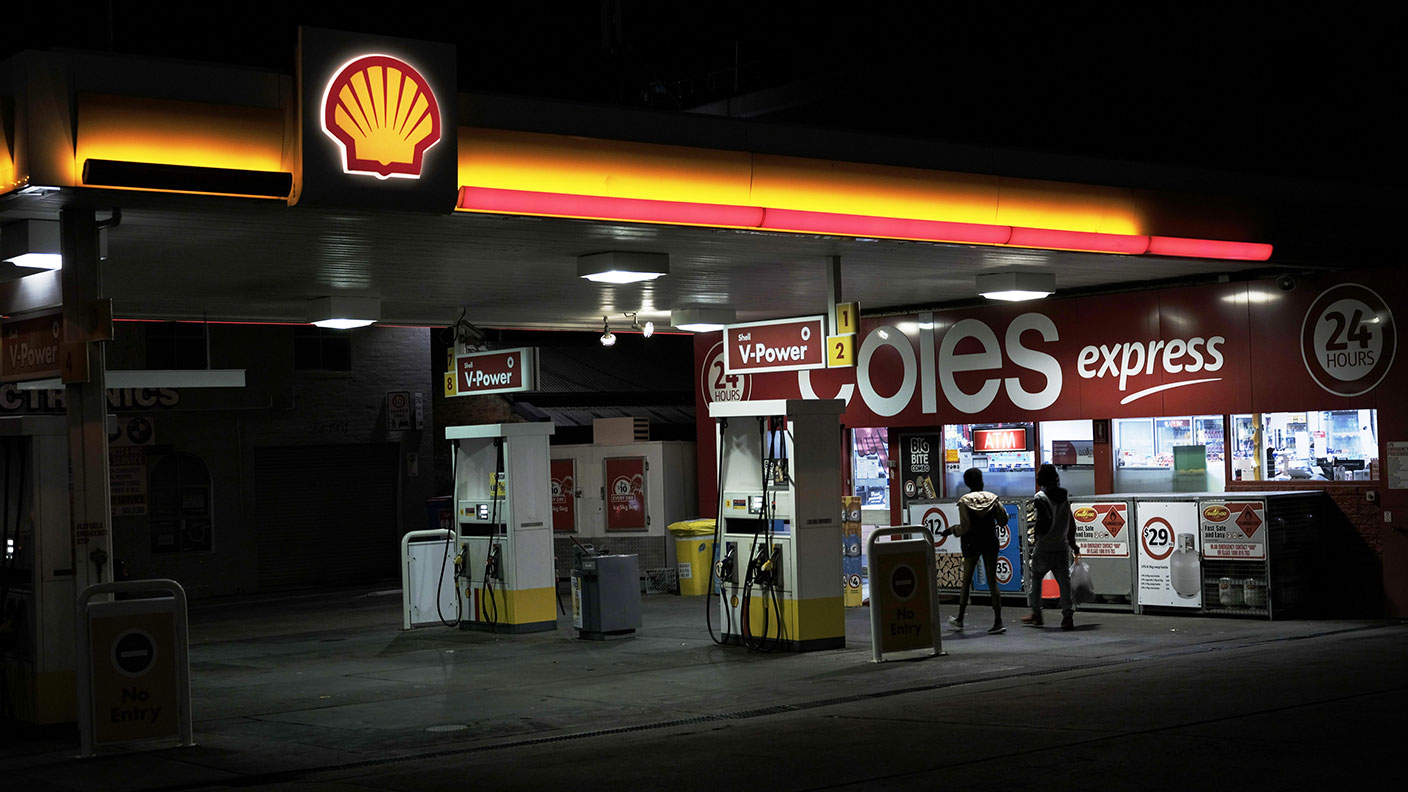The oil market is showing signs of life again
The oil market has had a terrible time recently as producers pumped as much oil as possible just as demand collapsed due to the coronavirus epidemic. But things are starting to look up, says John Stepek.


Most markets have had a tough time of it during the coronavirus pandemic.
But few can compare to oil. Even if you discount the plunge to negative levels seen in one high-profile contract last month, the slide in the oil price has still been dramatic.
However, the market has once again proved that prices shape behaviour as much as behaviour shapes prices.
MoneyWeek
Subscribe to MoneyWeek today and get your first six magazine issues absolutely FREE

Sign up to Money Morning
Don't miss the latest investment and personal finances news, market analysis, plus money-saving tips with our free twice-daily newsletter
Don't miss the latest investment and personal finances news, market analysis, plus money-saving tips with our free twice-daily newsletter
And oil is bouncing back as a result.
Oil demand has collapsed – but so has supply
The International Energy Agency (IEA), a Paris-based energy industry body, reckons that oil production is set to hit its lowest level in nine years this month, at 88 million barrels a day. That’s a big turnaround in a very short space of time.
Just a few short months ago, the major oil producers embarked on a brutal price war. Saudi Arabia and Russia – the duo commonly now known as Opec-plus – had a bit of a falling out, and also fancied their chances at putting those pesky US shale drillers out of business.
So they both pumped as much oil as possible with no care for the consequences. Indeed, last month, Saudi Arabia's oil production hit a record high.
Of course, this happened just as the entire developed world was on the verge of shutting itself down to dampen the coronavirus pandemic. No planes, hardly any cars, very little industry – globally, oil demand fell off a cliff.
The various participants tried to brazen it out. But by the middle of April, everyone involved was starting to feel the pain. Russia and Saudi Arabia might be able to produce oil very cheaply, but they both need to make big profits on the stuff they pump out in order to support their public spending commitments.
To put it another way, both Saudi Arabia and Russia require a high oil price to maintain economic and therefore political stability. Low oil prices represent a risk to domestic harmony. And no authoritarian government is keen to push the people too hard when it comes to that.
So everyone involved in oil production is now scrabbling to slash the number of barrels being pumped out. The US shale producers and Canadian tar sands producers have been cutting back on spending and exploration plans, and shutting down existing wells. The number of active drilling rigs in the US is at its lowest in almost five years.
Meanwhile, the Saudis have made even deeper cuts to their own production than they had first planned, announcing an entirely voluntary extra cut a couple of days ago, a move which was followed unexpectedly by Iran.
This has offset the initial scepticism markets had about whether oil producers – a notoriously unco-operative bunch – would actually stick to their promises.
It also helps that, according to the IEA, demand is not going to be quite as bad this year as it had previously expected. It’s still fallen pretty dramatically (to an estimated 91.2 million barrels a day, compared to 100 million a day last year) but it had originally expected an even greater drop.
As a result of all this, the oil price (as measured by Brent crude) is challenging the $30 a barrel mark once again, having hit an 18-year low of less than $20 a barrel just last month.
The oil majors are probably safe-ish bets for now
What can investors pick up from this? It’s another lesson to watch out for extremes in markets.
When oil prices turned deeply negative at the end of last month, it was a shocking event. It’s true that it only happened in one specific contract, and for one specific benchmark (WTI crude) and that it happened for very unusual reasons (overflowing storage tanks, basically).
But it was a headline grabber – even the non-business papers tried to cover it, with varying degrees of success – and that’s often a good sign that you’re in solid territory for taking the “contrarian” view.
When everyone is talking about how a market can only go in one direction (we even had predictions of oil hitting negative $100 a barrel), then the odds are good that you should take the other side of that trade.
Why? Because markets aren’t a one-way street. The slide in prices was caused by a change in the behaviour of Saudi Arabia, Russia, and the global population. One side pumped even more oil, the other side stopped consuming it.
But this same slide in prices caused behavioural changes too. On the demand side, people can’t buy more petrol right now simply because they’re in lockdown. But governments have been picking up more for their strategic reserves.
More importantly, on the demand side, producers realised that contrary to their earlier hopes, they simply couldn’t sustain a drop as drastic as the one they’d helped create. So they took action to reverse it.
Commodity markets are typically where you see this cycle play out most obviously. High prices lead to overproduction, which leads to low prices, which leads to underproduction, which leads to high prices, all with a predictable lag that mostly depends on how hard it is to shut down or open up production.
(This, incidentally, is why I’m always moaning on about how central banks have too much influence over market prices. If you distort the pricing mechanism then you gradually blunt the purpose of markets. They become mechanisms for handing out money to cronies, rather than funding and boosting smart competitors. You almost end up with a sort-of patronage economy rather than a free market one.)
Anyway, that’s a discussion for another day.
If we've now seen the bottom for oil prices then that suggests that the big oil majors are safe enough to stick with. Royal Dutch Shell (LSE: RDSB) has already cut its dividend, so that’s probably the UK-listed one with the least chance of more nasty surprises. That said, you could probably be fine with BP (LSE: BP) too as long as you brace yourself for the inevitable dividend trim later this year.
Meanwhile if you’re on the lookout for dividends, you should definitely get hold of this week’s issue of MoneyWeek magazine, out today. We look at some of the best options to grab an increasingly-scarce income from markets today. If you’re not already a subscriber, what are you waiting for? Get your first six issues free here.
Get the latest financial news, insights and expert analysis from our award-winning MoneyWeek team, to help you understand what really matters when it comes to your finances.
John Stepek is a senior reporter at Bloomberg News and a former editor of MoneyWeek magazine. He graduated from Strathclyde University with a degree in psychology in 1996 and has always been fascinated by the gap between the way the market works in theory and the way it works in practice, and by how our deep-rooted instincts work against our best interests as investors.
He started out in journalism by writing articles about the specific business challenges facing family firms. In 2003, he took a job on the finance desk of Teletext, where he spent two years covering the markets and breaking financial news.
His work has been published in Families in Business, Shares magazine, Spear's Magazine, The Sunday Times, and The Spectator among others. He has also appeared as an expert commentator on BBC Radio 4's Today programme, BBC Radio Scotland, Newsnight, Daily Politics and Bloomberg. His first book, on contrarian investing, The Sceptical Investor, was released in March 2019. You can follow John on Twitter at @john_stepek.
-
 How gifting money this Christmas could lower your inheritance tax bill
How gifting money this Christmas could lower your inheritance tax billCash is an easy and quick present to give over Christmas – and it could protect some of your estate from the taxman down the line
-
 £100 contactless card limit to be lifted
£100 contactless card limit to be liftedConsumers will be able to set their own contactless limits from March 2026, under new rules from the Financial Conduct Authority
-
 Halifax: House price slump continues as prices slide for the sixth consecutive month
Halifax: House price slump continues as prices slide for the sixth consecutive monthUK house prices fell again in September as buyers returned, but the slowdown was not as fast as anticipated, latest Halifax data shows. Where are house prices falling the most?
-
 Rents hit a record high - but is the opportunity for buy-to-let investors still strong?
Rents hit a record high - but is the opportunity for buy-to-let investors still strong?UK rent prices have hit a record high with the average hitting over £1,200 a month says Rightmove. Are there still opportunities in buy-to-let?
-
 Pension savers turn to gold investments
Pension savers turn to gold investmentsInvestors are racing to buy gold to protect their pensions from a stock market correction and high inflation, experts say
-
 Where to find the best returns from student accommodation
Where to find the best returns from student accommodationStudent accommodation can be a lucrative investment if you know where to look.
-
 The world’s best bargain stocks
The world’s best bargain stocksSearching for bargain stocks with Alec Cutler of the Orbis Global Balanced Fund, who tells Andrew Van Sickle which sectors are being overlooked.
-
 Revealed: the cheapest cities to own a home in Britain
Revealed: the cheapest cities to own a home in BritainNew research reveals the cheapest cities to own a home, taking account of mortgage payments, utility bills and council tax
-
 UK recession: How to protect your portfolio
UK recession: How to protect your portfolioAs the UK recession is confirmed, we look at ways to protect your wealth.
-
 Buy-to-let returns fall 59% amid higher mortgage rates
Buy-to-let returns fall 59% amid higher mortgage ratesBuy-to-let returns are slumping as the cost of borrowing spirals.
